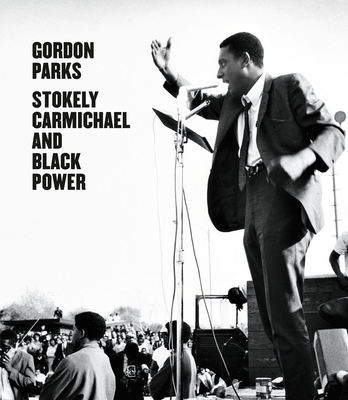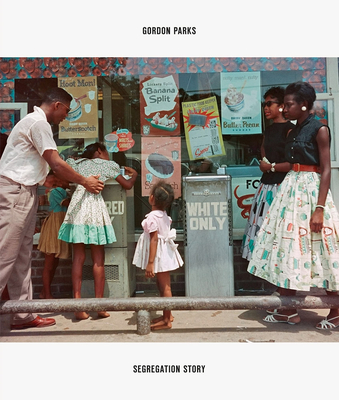6 Books Published by Steidl on AALBC — Book Cover Collage
 Gordon Parks: Herklas Brown and Maine, 1944
Gordon Parks: Herklas Brown and Maine, 1944
by Gordon ParksSteidl (Dec 31, 2024)
Read Detailed Book Description
Parks’ chronicle of small-town Maine anticipates his profound images of civil rights and inequality
In January 1944, Gordon Parks (1912-2006) photographed Herklas Brown—the owner of a general store and Esso gas station in Somerville, Maine. Parks traveled to the state under the auspices of the Standard Oil Company New Jersey (SONJ) to record their contributions to the war effort and document the home front during this crucial period. His photographs chronicled oil and gas facilities and workers, small-town Esso gas station owners, as well as people whose lives depended on fuel and other SONJ products.
Consistent with his work before and after, Parks prioritized getting to know his subjects as people, photographing Brown not only at his Esso station but also at home with his family. Despite the challenges he faced as a Black man traveling alone, Parks created a compelling documentary record of rural America. The images from this period offer crucial insight into the historic moment, as well as Parks’ early photographic practice directly before he began his tenure at Life magazine. Published in conjunction with an exhibition at the Bowdoin College Museum of Art, Herklas Brown and Maine, 1944 features more than 90 previously unpublished photographs.
 Gordon Parks: Born Black: A Personal Report on the Decade of Black Revolt 1960-1970
Gordon Parks: Born Black: A Personal Report on the Decade of Black Revolt 1960-1970
by Gordon ParksSteidl (Jun 25, 2024)
Read Detailed Book Description
Parks’ impactful images from the forefront of the civil rights and Black Power movements
Originally published in 1971, Gordon Parks’ Born Black was the first book to unite his writing and his photography and also the first to provide a focused survey of Parks’ documentation of a crucial time for the civil rights and Black Power movements. More than 50 years later, this expanded edition illuminates Parks’ vision for the book and offers deeper insight into the series contained within. The original publication featured nine articles commissioned by Life magazine from 1963 to 1970, supplemented with later commentary by Parks and presented as his personal account of these important historical moments. Born Black includes the original text and images, as well as additional photographs from each series, spreads from the 1971 book, early correspondence, and reproductions of related Life articles.
The nine series included in Born Black offer a rare glimpse inside San Quentin State Prison, extensive documentation of the Black Muslim movement and the Black Panthers, his commentaries on the deaths of civil rights leaders Malcolm X and Martin Luther King, Jr., intimate portrait studies of Stokely Carmichael, Muhammad Ali, and Eldridge Cleaver, and a narrative of the daily life of the impoverished Fontenelle family in Harlem. These selections have come to define Parks’ legendary career as a photographer and activist. This reimagined, comprehensive edition of Born Black highlights the lasting legacy of these projects and their importance to our understanding of critical years in American history.
 Jamel Shabazz: Albums
Jamel Shabazz: Albums
by Jamel ShabazzSteidl (Mar 28, 2023)
Read Detailed Book Description
Photo albums from the archives of the iconic chronicler of New York’s 1980s rap, hip-hop and Black culture
The influential Brooklyn-based photographer Jamel Shabazz has been making portraits of New Yorkers for more than 40 years, creating an archive of cultural shifts and struggles across the city. His portraits of different communities underscore the street as a space for self-presentation, whether through fashion or pose. In every instance Shabazz aims, in his words, to represent individuals and communities with ""honor and dignity."" This book—awarded the Gordon Parks Foundation/Steidl Book Prize—presents, for the first time, Shabazz’s work from the 1970s to ’90s as it exists in his archive: small prints thematically grouped and sequenced in traditional family photo albums that function as portable portfolios.
Shabazz began making portraits in the mid-1970s in Brooklyn, Queens, the West Village and Harlem. His camera was also at his side while working as an officer at Rikers Island in the 1980s, where he took portraits of inmates. This book features selections from over a dozen albums, many previously unseen, and includes his earliest photographs as well as images taken inside Rikers Island, all accompanied by essays that situate Shabazz’s work within the broader history of photography.
 Gordon Parks Stokely Carmichael and Black Power
Gordon Parks Stokely Carmichael and Black Power
by Gordon ParksSteidl (Nov 15, 2022)
Read Detailed Book Description
A nuanced profile, in image and text, of the great Black Power leader at the exhilarating moment of the movement’s ascendancy
Gordon Parks’ 1967 Life magazine essay "Whip of Black Power" is a nuanced profile of the young, controversial civil rights leader Stokely Carmichael. As chairman of the Student Nonviolent Coordinating Committee, Carmichael gained national attention and inspired media backlash when he issued the call for Black Power in Greenwood, Mississippi, in June 1966. Parks shadowed him from the fall of 1966 to the spring of 1967, as Carmichael gave speeches, headed meetings and promoted the growing Black Power movement. Parks’ photos and writing addressed Carmichael’s intelligence and humor, presenting the whole man behind the headline-making speeches and revealing his own advocacy of Black Power and its message of self-determination and love.
Stokely Carmichael and Black Power delves into Parks’ groundbreaking presentation of Carmichael, with analysis of his images and accompanying text about the charismatic leader. Lisa Volpe explores Parks’ complex understanding of the movement and its leader, and Cedric Johnson frames Black Power within the heightened political moment of the late 1960s. Carmichael’s own voice is represented through a reprint of his important 1966 essay "What We Want."
 Gordon Parks Segregation Story
Gordon Parks Segregation Story
by Gordon ParksSteidl (Sep 27, 2022)
Read Detailed Book Description
An expanded edition of Parks’ classic account of race relations in America, with previously unpublished images and texts
This expanded edition of Gordon Parks: Segregation Story includes 30 previously unpublished photographs, as well as enhanced reproductions created from Parks’ original color transparencies; newly discovered descriptions Parks wrote for the photographs; a manuscript of film-developing instructions and captions Parks authored with Samuel F. Yette; previously published text by the late art historian Maurice Berger and the esteemed journalist and civil rights activist Charlayne Hunter-Gault; and a new essay by artist Dawoud Bey.
After the photographs were first presented in a 1956 issue of Life magazine, the bulk of Parks’ assignment was thought to be lost. In 2011, five years after Parks’ death, the Gordon Parks Foundation found more than 200 color transparencies belonging to the series. In 2014 the series was first published as a book, and since then new photographs have been uncovered.
In the summer of 1956, Life magazine sent Gordon Parks to Alabama to document the daily realities of African Americans living under Jim Crow laws in the rural South. The resulting color photographs are among Parks’ most powerful images, and, in the decades since, have become emblematic representations of race relations in America. Pursued at grave danger to the photographer himself, the project was an important chapter in Parks’ career-long endeavor to use the camera as a weapon for social change.
 Gordon Parks I Am You: Selected Works 1934-1978
Gordon Parks I Am You: Selected Works 1934-1978
by Gordon ParksSteidl (Nov 22, 2016)
Read Detailed Book Description
Injustice, violence, the Civil Rights Movement, fashion and the arts—Gordon Parks captured half a century of the vast changes to the American cultural landscape in his multifaceted career. I Am You: Selected Works 1934�“1978 reveals the breadth of his work as the first African American photographer for Vogue and Life magazines as well as a filmmaker and writer.
Reportage for major magazines dominated Parks’ work from 1948 to 1972. He chronicled black America’s struggle for equality, exposing the harsh realities of life in Harlem, institutionalized racism and shocking poverty. Parks was equally accomplished as a portraitist, capturing figures such as Malcolm X, Martin Luther King, Duke Ellington and Ingrid Bergman. He turned his attention to film in the 1960s with social documentaries, as well as the cult classic Shaft (1971).
This volume traces all the threads of Parks’ achievement, examining the interaction between his photographic and filmic visions.
Gordon Parks (1912-2006) was born in Fort Scott, Kansas. He worked as a brothel pianist and railcar porter, among other jobs, before buying a camera at a pawnshop, training himself, and becoming a photographer. In addition to his tenures photographing for the Farm Security Administration (1941�“45) and Life (1948�“72), Parks evolved into a modern-day Renaissance man, finding success as a film director, writer and composer. He wrote numerous memoirs, novels and poetry, and received many awards, including the National Medal of Arts and more than 50 honorary degrees.
